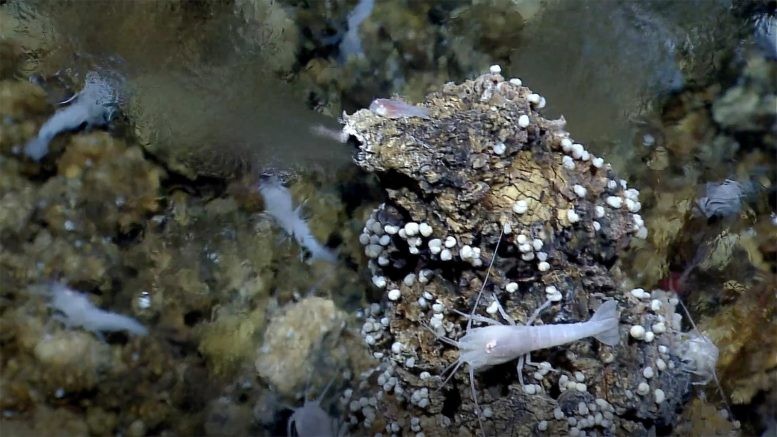
By mimicking rocky seafloor chimneys in the lab, scientists have produced new evidence that these features could have provided the right ingredients to kick-start life.
Where did life first form on Earth? Some scientists think it could have been around hydrothermal vents that may have existed at the bottom of the ocean 4.5 billion years ago. In a new paper in the journal Astrobiology, scientists at NASA’s Jet Propulsion Laboratory describe how they mimicked possible ancient undersea environments with a complex experimental setup. They showed that under extreme pressure, fluid from these ancient seafloor cracks mixed with ocean water could have reacted with minerals from the hydrothermal vents to produce organic molecules — the building blocks that compose nearly all life on Earth.
In particular, the research lays important groundwork for in-depth studies of such ocean worlds as Saturn’s moon Enceladus and Jupiter’s moon Europa, which are both thought to have liquid-water oceans buried beneath thick icy crusts and may host hydrothermal activity similar to what’s being simulated at JPL. This area of research belongs to a field of study known as astrobiology, and the work was done by the JPL Icy Worlds team as part of the former NASA Astrobiology Institute
Under the Ancient Sea
To simulate conditions that might have existed on the ocean floor of a newly formed Earth, before the sea teemed with life, then-graduate student Lauren White and colleagues conducted an experiment that brought together three key ingredients: hydrogen-rich water, like the kind that could have flowed out from beneath the seafloor through vents; seawater enriched with carbon dioxide, as it would have been from the ancient atmosphere; and a few minerals that might have formed in that environment.
White and colleagues — including her graduate advisor, retired JPL scientist Michael Russell — simulated vents that didn’t spew particularly hot water (it was only about 212 Fahrenheit, or 100 degrees Celsius). One major challenge with creating the experimental setup was maintaining the same pressure found 0.6 miles (1 kilometers) below the ocean surface — about 100 times the air pressure at sea level. Previous experiments have tested similar chemical reactions in individual high-pressure chambers, but White and her colleagues wanted to more fully replicate the physical properties of these environments, including the way the fluids flow and mix together. This would require maintaining the high pressure in multiple chambers, which added to the complexity of the project. (Because a crack or leak in even a single high-pressure chamber poses the threat of an explosion, it’s standard operating procedure in such cases to install a blast shield between the apparatus and the scientists.)

